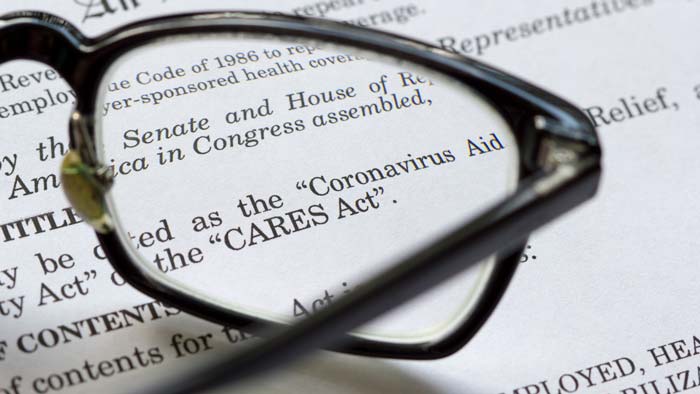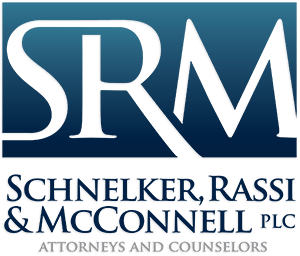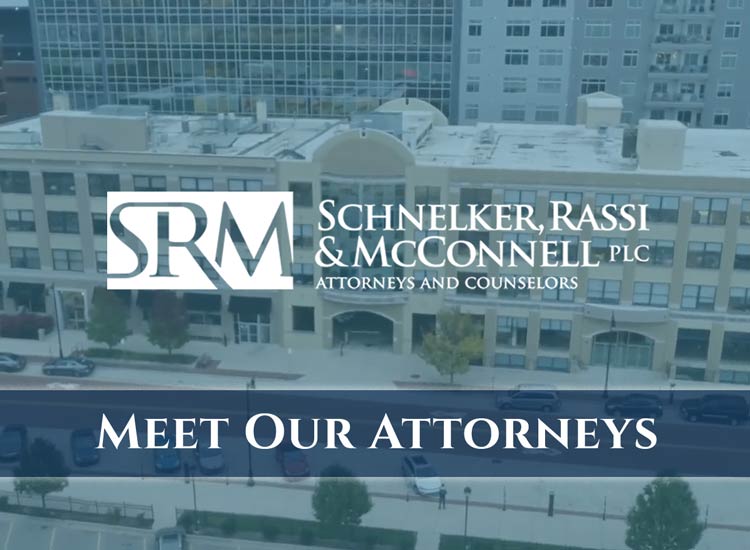NOTE: Right before we were about to send this message, the US Department of Treasury released a Fact Sheet for the new SBA Payment Protection Loan Program. You can download it HERE. We have attempted to update this alert to reflect these changes, but please excuse any conflicting information and rely on the linked document in the event of such a conflict.

This summary will provide some important updates on the status of the following:
- Coronavirus Aid, Relief, and Economic Security Act (“CARES Act”) which became law on March 27, 2020
- Michigan Governor Gretchen Whitmer’s Executive Order No. 2020-24 for Temporary Expansions in Unemployment Eligibility and Cost-Sharing (“MI UI Benefits Order”) issued with retroactive effect to March 16, 2020
- Families First Coronavirus Response Act (“FFCRA”) which became law on March 18, 2020
IMPORTANT: As we have said previously, much is changing daily and guidance continues to be released on how these new laws will be administered and regulated. What follows below are our interpretations and related recommendations, all of which are for information purposes only. If you have more detailed questions about your specific situation, please contact us directly.
CARES Act Update
The CARES Act has many provisions that should help most businesses. Right now we believe the most critical thing for businesses is to prepare to make an application for a Paycheck Protection Program Loan (“PPP Loan”) which is discussed in more detail below.
The CARES Act also provides for streamlined grants of $10,000 under the SBA’s Economic Injury Disaster Loan (“EIDL”) program. This is in addition to the SBA’s regular EIDL program which has also been modified by the CARES Act to provide for additional funding with fewer restrictions. Note that grants awarded will be charged against any loan forgiveness under a PPL Loan.
You can apply for an EIDL grant HERE.
Information on the general EIDL program can be found HERE.
PPP Loan Program Refresher
Most businesses with less than 500 employees will be eligible for a PPP Loan from the SBA equivalent to 2 times their average “payroll” for the last 12 months plus 25% of this amount. Loans will have no fees, will not require a personal guarantee or a collateral pledge, and will accrue interest at a fixed rate of only 0.5%. Payments will be deferred for the first 6 months, though interest will accrue. Loans will mature in 2 years.
If loan funds are used during the eight (8) week period after the loan is funded for qualifying expenses (payroll, mortgage interest, rent, and/or utilities) the principal amount of the loan (not the interest), subject to some limitations, will be forgiven. It appears loan forgiveness for non payroll expenses will be limited to 25% of the loan amount. This means most expenses eligible for forgiveness will need to be payroll expenses.
If deployed correctly, the loan should amount to a lifeline for your business at no more than the cost of accrued interest.
PPP Loan Process
According to the US Treasury, businesses will be able to apply for a PPP Loan this Friday, April 3, 2020, and independent contractors and self employed individuals can apply through beginning April 10, 2020. You can apply through any existing SBA lender or through any federally insured depository institution, federally insured credit union, and Farm Credit System institution that is participating.
We therefore recommend that businesses gather the necessary information now to complete an application package as soon as the program launches. The application process should be streamlined on a two page application, but there are several key pieces of information that will likely need to be provided. You can access a sample application form HERE.
Calculation of Loan Amount
Application forms have not yet been provided, but we recommend businesses run a calculation to determine the loan amount for which they may be eligible. Loans will be limited to two (2) times the average monthly “payroll” for the last 12 months PLUS an additional 25% of that amount. “Payroll” includes salary and wages (up to $100,000 per employee), benefits such as vacation pay, health care and retirement contributions, as well as state and local withholding taxes (not federal). We have prepared a simple form for you to run an estimate of your eligible loan amount. You may download it HERE.
Certification of COVID-19 Impact
Applicants will need to certify the following:
- Current economic uncertainty makes the loan necessary to support your ongoing operations.
- The funds will be used to retain workers and maintain payroll or to make qualifying mortgage, lease, and utility payments.
- You have not and will not receive another loan under this program.
- You will provide to the lender documentation that verifies the number of full-time equivalent employees on payroll and the dollar amounts of payroll costs, covered mortgage interest payments, covered rent payments, and covered utilities for the eight weeks after getting this loan.
- Loan forgiveness will be provided for the sum of documented payroll costs, covered mortgage interest payments, covered rent payments, and covered utilities. Due to likely high subscription, it is anticipated that not more than 25% of the forgiven amount may be for non-payroll costs.
- All the information you provided in your application and in all supporting documents and forms is true and accurate and that knowingly making a false statement to get a loan under this program is punishable by law.
- You acknowledge that the lender will calculate the eligible loan amount using the tax documents you submitted. You affirm that the tax documents are identical to those you submitted to the IRS. And you also understand, acknowledge, and agree that the lender can share the tax information with the SBA’s authorized representatives, including authorized representatives of the SBA Office of Inspector General, for the purpose of compliance with SBA Loan Program Requirements and all SBA reviews.
Supporting Information
Lenders may ask for supporting information. You should be prepared to supply the following:
- Payroll expense verification (IRS form 940, 941; payroll summary report; employee pay stubs, etc.)
- Breakdown of benefits (vacation, health care, retirement, etc.)
- Certification that all employees live in the US
- Trailing 12-month P&L as of the date of the application
- Most recent mortgage or rent statement
The Bottom Line
DO NOT WAIT. Given the perceived demand, funding is expected to be used up quickly. Applying as soon as possible is critical.
Update on Unemployment Benefits
Last week the State of Michigan announced that it entered into an agreement with the U.S. Department of Labor to implement enhanced unemployment benefits in accordance with the CARES Act.
What This Means for Your Employees
- Increased Benefits: All unemployed (and furloughed) workers will be eligible for a set amount of $600 per week in addition to the usual state-approved amount (a maximum of $362 per week) for up to 4 months. Therefore, the combined amount could be as much $962 per week during this period. Workers who have already applied for benefits do not need to re-apply to receive this extra amount. Michigan has also generally expanded the period to receive state funded benefits (no more than $362 per week) for up to 39 weeks.
- Expanded Eligibility: Some workers who were not otherwise eligible for unemployment benefits in Michigan are now eligible. This includes self-employed individuals, 1099 independent contractors, gig workers, low-wage workers, and those with a limited work history.
Additional Resources
Additional guidance will be issued soon. Information, including resources for employers, is available HERE.
Benefits under Michigan’s Work Share Program (which permits employers to maintain operational productivity during declines in their business by reducing employees’ hours rather than implementing layoffs or furloughs) have been enhanced as well. Information about it can be found HERE.
To view the State of Michigan’s guidance for employers contemplating potential layoffs, visit HERE.
The Bottom Line
With these changes, it may be more lucrative for employees to claim unemployment than continue to work. Businesses should evaluate this when considering layoffs and evaluating payroll expenses in the context of a PPP Loan or other stimulus program.
Families First Coronavirus Response Act (“FFCRA”)
FFCRA Key Provisions
The Emergency Paid Sick Leave Act, (“EPSLA”) provides up to two weeks (80 hours) of fully paid time off (capped at $511 per day) to employees unable to work due to COVID-19. The EPSLA also provides for up to two weeks (80 hours) of paid time off at 2/3 of the employee’s rate of pay (capped at $200 per day) to employees caring for others as a result of COVID-19.
The Emergency Family Medical Leave Act (“EFMLA”) provides for up to 12 weeks of two-thirds paid emergency leave (capped at $200 per day) to employees caring for children that are at home due to a COVID-19 closure of their school or child care facility which means it could apply to most children in Michigan.
The Department of Labor (“DOL”) has issued some additional guidance to clarify some commonly asked questions regarding the FFCRA.
Application of Paid Leave During Business Closures or Layoffs
Under the DOL’s recent guidance, employees do not receive, or continue to receive, paid leave under the FFCRA if their worksite closes due to lack of business or pursuant to a federal, state, or local directive. This means employees on leave due to Michigan’s Stay at Home Order are NOT entitled to paid leave under the FFCRA. For employees out of work due to the Stay at Home Order, those employees should qualify for enhanced unemployment insurance benefits and employers who continue to pay them should qualify under one of the CARES Act programs.
Clarification of Effective Date
The DOL has clarified that qualified sick leave wages and qualified family leave wages under the FFCRA only apply for the period from April 1, 2020 to December 31, 2020. If you already provided paid leave as a result of the COVID-19 pandemic prior to April 1, that leave should be reclassified and counted against the employee’s available sick time/PTO. Beginning April 1, employers can utilize the tax credits for any federally mandated paid leave under the FFCRA.
Required Compliance with the FFCRA
While the FFCRA goes into effect on April 1, the DOL will observe a temporary period of non- enforcement of the FFCRA to enable employers who are covered by the FFCRA to come into compliance with the new law. The DOL will not bring enforcement actions against any public or private employer for violations of the FFCRA occurring through April 17, 2020, provided that the employer has made reasonable, good faith efforts to comply with the FFCRA. The FFCRA also requires an appropriate notice be posted in your workplace. You may print that notice HERE.
Clarification on Exemption for Businesses with Fewer Than 50 Employees
The FFCRA created an exemption for a business with fewer than 50 employees if the “imposition of such requirements would jeopardize the viability of the business as a going concern.” The DOL has now provided clarification on what is required to meet this threshold. Generally, a small business may claim this exemption if an authorized officer of the business has determined that:
- The provision of paid sick leave or expanded family and medical leave would result in the small business’s expenses and financial obligations exceeding available business revenues and cause the small business to cease operating at a minimal capacity;
- The absence of the employee or employees requesting paid sick leave or expanded family and medical leave would entail a substantial risk to the financial health or operational capabilities of the small business because of their specialized skills, knowledge of the business, or responsibilities; or
- There are not sufficient workers who are able, willing, and qualified, and who will be available at the time and place needed, to perform the labor or services provided by the employee or employees requesting paid sick leave or expanded family and medical leave, and these labor or services are needed for the small business to operate at a minimal capacity.
The small business exemption only applies to paid leave requirements due to school closure or for child care, not the other criteria for paid leave under the FFCRA (illness, caring for someone who is ill, etc.). In those cases, the employer must pay the employee for leave under the FFCRA.
Additional information from the DOL can be found HERE.
The Bottom Line
The FFCRA will only apply with respect to COVID-19 related family and medical leave taken after April 1, 2020 and will not apply to any employees who are not working purely due to Michigan’s Stay at Home Order or any subsequent order of mandatory closure. Those employees should claim unemployment if their employer is not otherwise paying them during this period.
IMPORTANT: Again, much is changing daily. This update contains our initial interpretations and related recommendations, all of which are for information purposes only. If you have more detailed questions about your specific situation, please contact one of our attorneys directly.
Contact Us
Our lawyers in Grand Rapids, MI, would be more than happy to help with your case! Call Schnelker, Rassi & McConnell, PLC at (616) 828-1195 to set up a meeting with one of our trusted attorneys.


